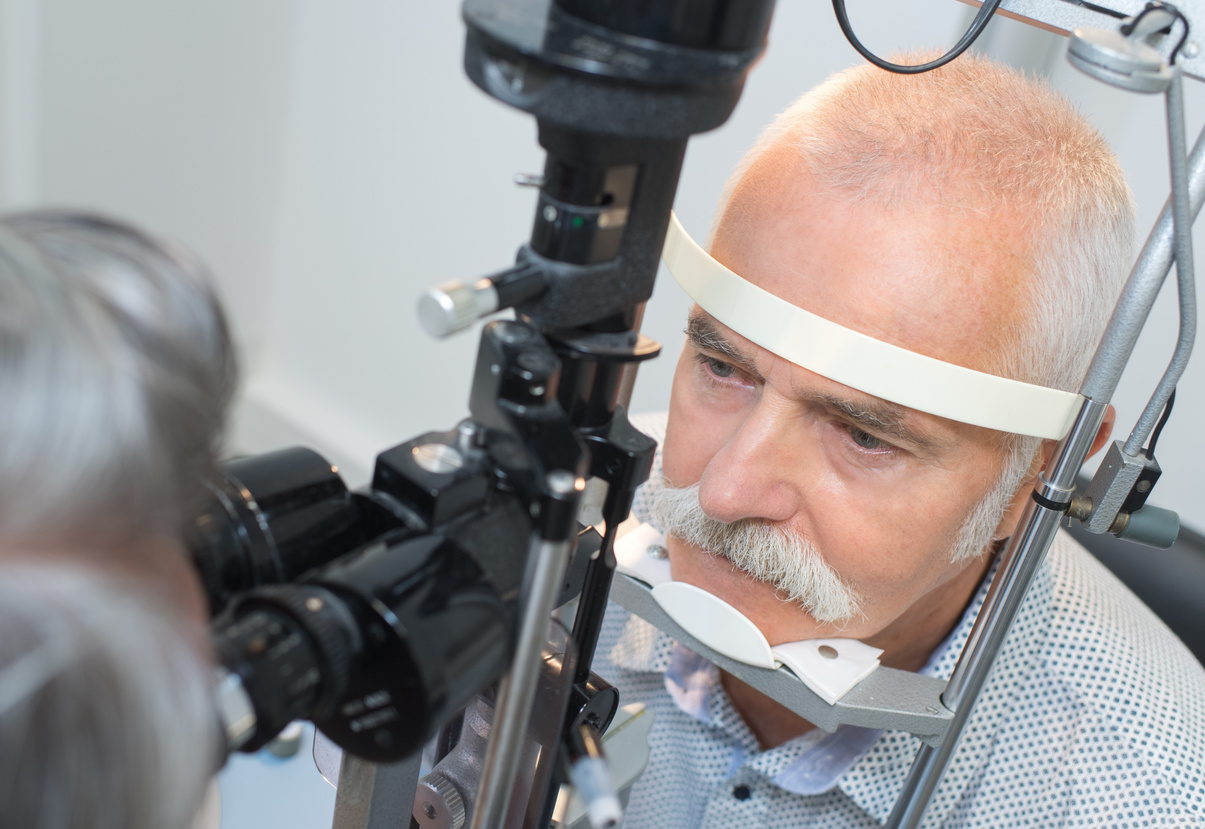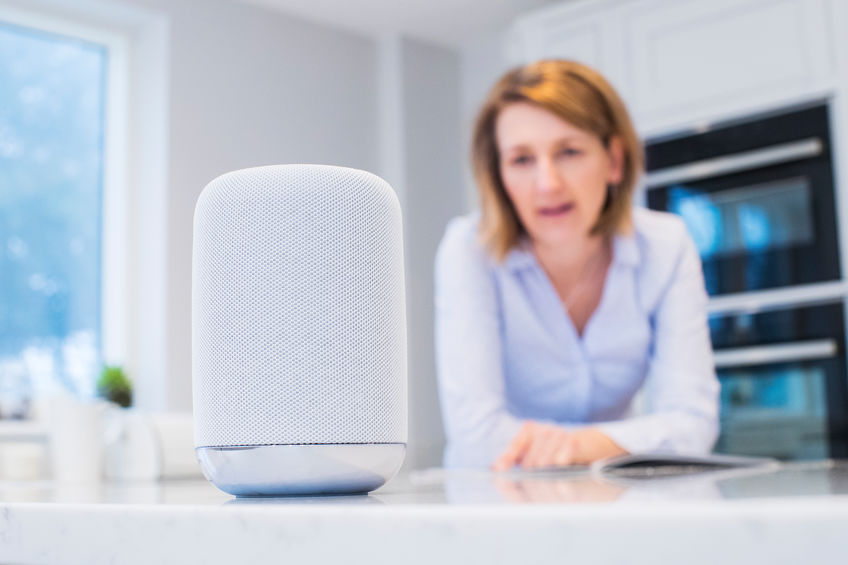Low Vision Services from a Patient Perspective
Low vision services can benefit anyone with macular degeneration. Dan Roberts, the founding director of MD Support, Inc and the author of The First Year: Age-Related Macular Degeneration: An Essential Guide for the Newly Diagnosed has given of himself in many ways to those who have been affected by age related macular degeneration (AMD).
Dan Roberts E-Interview
Not only does he know first hand what it means to live with AMD, he also knows about and teaches others how low vision services, such as low vision rehab and orientation and mobility training, can help a person with age-related macular degeneration.

He is the recipient of the 2004 Distinguished Service Award presented by the American Optometric Association Low Vision Rehabilitation Section so it is no surprise that he continues to generously share with others what low vision services has meant to him and how he has benefited from them.
Keep reading for our recent e-interview with Dan Roberts:
1. Tell us about your eye condition. What type of macular degeneration do you have?
I have two conditions (co-morbidities): central serous retinopathy (CSR) and the dry form of age-related macular degeneration (AMD). The central vision is gone in my left eye, but my right eye is still functional with correction.

I was diagnosed in 1994, at which time I was told only that I would probably lose my vision.
I was not offered any further assistance or resources, and I knew nothing about the possibility of low vision rehabilitation.
I did not, therefore, ask about it. Instead, I spent the next year in fear of going blind and thinking I would soon become dependent upon my wife and family for everything.
2. How long after your diagnosis did you decide to seek the help of low vision rehab?
Since I didn't know about LV rehab, I never sought it out for myself. But by the time I had begun my research and founded MD Support, I had learned enough about it that I was actually helping in the low vision certification training of occupational therapists (University of Alabama, Birmingham and contributor to the AOTA instruction course).

I initially learned about LV rehab while making of the film, "Learning to Live with Low Vision--A Journey Through Rehabilitation," which eventually became Chapter 5 in my book.
3. Why did you decide to go?
Looking back, I probably would not have decided to go, even if I had been told about rehabilitation intervention. I didn't need it at the time, because my sight was still quite functional.
For that matter, I probably wouldn't even go today, because I can still see well enough with magnification and good lighting. Another reason I might not have gone to rehab is the expense. Not being old enough at the time for Medicare, I could not have afforded the devices on my teacher's salary.

I know that sounds strange for someone who is now such an advocate of LV rehabilitation, but I have found that attitude to be prevalent in newly-diagnosed patients.
Not only does the new patient's state of vision not usually require intervention, but he is often in a state of denial and ignorance, rejecting anything that might identify him as a member of the "blind" community.
The most effective approach is to ensure that the patient immediately receives information about the opportunities for support, rehabilitation and further knowledge. This will help alleviate much of the fear of the future and lead to a healthy patient-directed approach to dealing with the disease on a personal level.
4. How did you find out about local low vision services?
Through my work gathering resources for the MD Support website. These resources now include geographically-organized contact information for rehabilitation agencies in every state. See MD Support/Resources
5. How long are the sessions and how often does one go for rehab?
A full LV rehab program is typically six weeks long, with 1-2 hour sessions twice a week. Home visits by the therapist are also ideally part of the program.
6. In what ways did you benefit from what you learned at rehab?
A diagnosis of AMD can leave one feeling powerless. Knowledge, training and human support can give that power back. This is what low vision intervention can do.
And even just knowing it is available, if necessary, will relieve much of the anxiety that can prevent a person from living a quality life.

7. What visual aid(s) did you find most helpful or useful for your situation?
Anything that addresses the "Three B's": Big, Bright and Bold. Everyone is different in their needs, but there is something out there that can help at any stage of vision loss or in any environment

The most basic devices that we should all have on hand are a flashlight, a magnifier of the right strength for near viewing, and a miniature telescope for distance viewing.
As the disease progresses, it may be necessary to go to nonoptical options, such as audio technology or Braille. This transition from optical to nonoptical can be emotionally troublesome, but most patients are willing to do so if they are introduced gradually and on an as-needed basis.

The MD Support site contains complete directories of all technology products and low vision aids.
8. Tell us who you think would benefit from the services provided by low vision rehab?
Absolutely every newly-diagnosed patient needs to be given information about LV rehab. As for when they can benefit from the actual service, that should be at the patient's own discretion. Of course, it is important to keep the option on the table, so reminders at every appointment should be part of the regular protocol.
Final remarks:
Fear of the unknown is the worst of all fears, and, therefore, the biggest challenge in coping with progressive vision loss. This is the answer virtually everyone will give you who has gone through this experience.
That’s where you come in. With websites such as WebRN, you are a sentinel at the bridge between diagnosis and acceptance. You are in a position to make the unknown known for untold numbers of frightened people. Thank you for pursuing this direction in health care, and thank you for inviting me to take part in your effort.
Dan Roberts
More information on low vision services can be found in chapter 5 of Dan's book. The chapter is called, "A Journey through Low Vision Rehabilitation: Jim's Story."
His book, The First Year: Age-Related Macular Degeneration: An Essential Guide for the Newly Diagnosed, was the most helpful and favorite macular degeneration book for my father-in-law who lived with macular degeneration for 20 years.
Go from Low Vision Services to Macular Degeneration Specialist
Go from Low Vision Services to WebRN Macular Degeneration Home
Would you like to be updated on:
The Latest Macular Degeneration Clinical Trials?

radic; Prevention of Macular Degeneration?
√ Tips for Daily Living?
√ Food Suggestions for a Macular Degeneration Diet?
√ Ideas on Visual Aids to Maximize your Sight?
If you said "yes" to any of the above, sign up for my monthly Macular Degeneration News.
